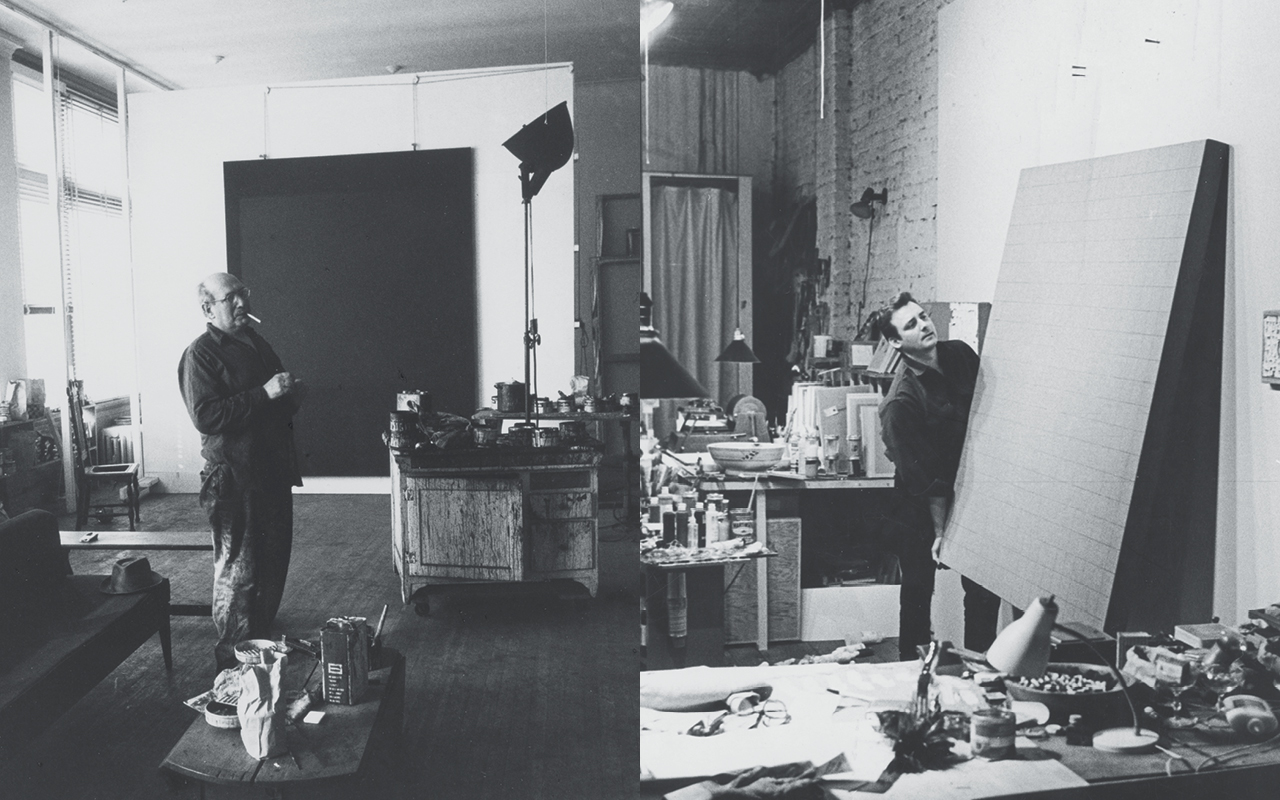
Mark Rothko in his studio (detail), 1964 – 1968, gelatin silver, Alexander Liberman Photography Archive, Getty Research Institute, Los Angeles J. Paul Getty Trust
Robert Ryman in his Bowery studio 8detail), 1964. Unpublished photo by The New York Times. Courtesy Robert Ryman Archive
Opening Reception: ‘Just There’ Rothko Ryman
Both Mark Rothko and Robert Ryman are considered mavericks of post-war American painting. Through their work, they embody an idea of artistic perfection that few other painters can match; for this reason, their paintings are usually exhibited on their own. Ryman expressly wanted this as he considered his works too difficult to be shown alongside other painters. This exhibition will therefore come as a surprise, but there are good reasons for this. Ryman rarely spoke about contemporary painters, but he repeatedly referred to Rothko, whose paintings he had become acquainted with at the Museum of Modern Art in New York. In 1961, MoMA presented Rothko’s first retrospective and many younger painters, including Ryman, used this opportunity to get to know the work of the abstract expressionist in greater depth. Among these younger painters was Ryman, who around this time had taken the risk of setting up a studio and embarking on a career as an independent painter. Ryman was fascinated by the fact that the older artist’s paintings made visible what preoccupied himself about painting, in that everything that determined the painting’s outcome was visible. Years later, he formulated this in an interview, stating: ‘There was the color, the form, the structure, the surface and the light—the nakedness of it, just there.’
UPCOMING EVENTS
1 / 17
















